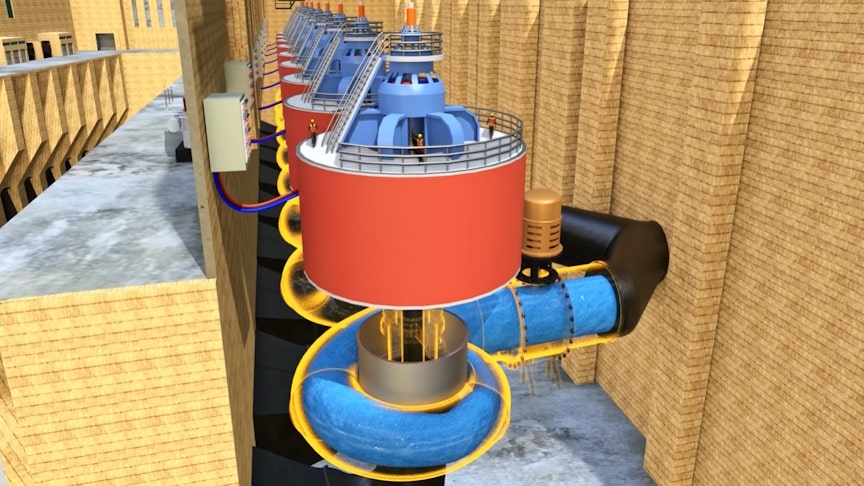Hoover Dam was constructed in Black Canyon of the Colorado River on the common state boundary of Arizona and Nevada. As one of the greatest engineering accomplishments of all time.Hoover Dam rises 726.4 feet above bedrock, equivalent to a 60-story building. The base of the dam is 660 feet thick, equivalent to the length of two city blocks. It is 45 feet thick at the crest, and the length of the crest from canyon-wall to canyon-wall, is 1,244 feet, nearly one-quarter of a mile.
source.image(PrtSc): Lesics
Four reinforced-concrete intake towers located above the dam divert water from the reservoir into huge steel pipes called penstocks.Through four penstocks, two on each side of the river. Wicket gates control water delivery to the units.Watch the video from Lesics:
The 17 Francis turbine-generating units at Hoover were installed from 1936 to 1961. Because of the span of years, the equipment is not identical. There are five turbine designs in operation at Hoover, requiring careful and detailed inspections of each unit to ensure that upgraded and/or rehabilitated components have the proper fit and function.
Advertisement
Hoover Dam generates more than 4 billion kilowatt-hours of electricity each year, enough to serve 1.3 million people. Still, this efficient and seemingly cheap source of power is not without its costs.The dam is designed to move during an earthquake, estimated to withstand a magnitude of 8.5.











